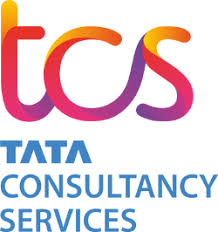Improving multilingual team efficiency
%201%20(1).png)
Holiday Extras uses ChatGPT Enterprise across every team, saving over 500 hours weekly. It helps with multilingual marketing copy, improves data fluency for non-technical employees, accelerates engineering productivity, and enhances UI/UX design with a custom GPT. Customer service inquiries are handled 30% by AI, increasing NPS scores.
.png)
Saving over 500 hours weekly; customer service inquiries handled 30% by AI, increasing NPS scores.
21
AI use cases in
Travel and Hospitality

%201%20(1).png)
Booking.com integrated OpenAI’s GPT models with its extensive proprietary data on properties, pricing, and availability to develop an AI Trip Planner that converts natural language queries into personalized itineraries. The team rapidly built the solution in 10 weeks by leveraging existing ML infrastructure and fine-tuning the model on both structured and unstructured data, which also powered additional tools like Smart Filters, Property Q&A, and AI Review Summaries. This innovation transformed travel discovery, search, and customer support processes.
%20(1).png)

%201%20(1).png)
Mystifly partnered with Google Cloud to develop Mystic, an AI-powered chatbot that leverages Vertex AI Agent Builder to understand complex airline industry queries. They implemented an internal system by indexing PDFs stored in Google Cloud Storage into an unstructured datastore for quick retrieval and integrated Dialogflow CX with Cloud Functions for seamless escalation. This solution automated customer onboarding and support workflows for their SSP Manager platform by enabling travel agents to resolve configuration questions independently.
%20(1).png)

%201%20(1).png)
Holland America Line developed a virtual agent called "Anna" using Microsoft Copilot Studio, which acts as a digital concierge on their website to support customers and travel advisors in booking cruises, managing existing bookings, and answering general questions.
%20(1).png)
321
companies using
Employee Agents

%201%20(1).png)
Cox Automotive integrated Claude via Amazon Bedrock into its portfolio by first creating a sandbox environment to evaluate performance metrics and then selecting Claude 3.5 Sonnet for complex tasks and Claude 3.5 Haiku for high-volume content generation. They automated personalized dealer-consumer communications, generated engaging vehicle listing descriptions, and produced SEO-optimized blog posts, while also streamlining internal data governance through automated metadata generation. This integration optimized operational efficiency across marketing and internal data processes.
%20(1).png)

%201%20(1).png)
Quillit integrated Anthropic’s Claude to automate qualitative research tasks by summarizing interview transcripts, generating contextual citations, and threading conversation data into comprehensive reports. They implemented the AI tool into their existing research workflow within three months, streamlining report writing, transcription, and analysis while ensuring data security and high precision.
%20(1).png)

%201%20(1).png)
TCS partnered with Google Cloud to integrate advanced AI and generative AI capabilities into retail service offerings. They launched the Google Cloud Gemini Experience Center at their Retail Innovation Lab in Chennai, enabling retail clients to ideate, prototype, and co-develop tailored AI solutions that optimize supply chain, warehouse receiving, customer insights, and content creation. This approach automated processes using tools like Vertex AI Vision for warehouse receiving and leveraged Vertex AI with Gemini 1.5 Pro and speech-to-text to transform service centers.
%20(1).png)
78
solutions powered by
OpenAI

%201%20(1).png)
Notion reimagined its platform by deeply integrating OpenAI’s GPT‑4o, GPT‑4o mini, and embeddings across its core features. They prototyped an AI writing assistant during a hackathon and then built internal tools to rapidly evaluate and deploy new models, transforming workflows in search, note-taking, and knowledge management from static content to interactive, actionable insights.
%20(1).png)

%201%20(1).png)
Zendesk integrated OpenAI's models to create adaptive AI service agents that autonomously manage customer conversations and execute resolution tasks. They implemented a multi-agent architecture featuring task identification, conversational RAG, procedure compilation, and procedure execution agents integrated with existing support workflows through API calls and natural language procedure definitions, while providing real-time chain-of-thought visibility. This solution transitions from traditional intent-based bots to a hybrid model of scripted and generative reasoning, streamlining customer service processes.
%20(1).png)

%201%20(1).png)
Hebbia built Matrix, a multi-agent AI platform that orchestrates OpenAI models including o3‑mini, o1, and GPT‑4o to automate complex financial and legal research tasks. The platform decomposes intricate queries into structured analytical steps and integrates modules like OCR, hallucination validation, and artifact generation to process complete documents, creating an infinite effective context window. This solution streamlines due diligence, contract review, and market research workflows, drastically reducing manual processing time.
%20(1).png)
159
AI use cases in
Europe

%201%20(1).png)
Deutsche Bank developed DB Lumina, an AI-powered research agent built on Gemini and Vertex AI through a partnership with Google Cloud. The solution automates the creation of financial research reports by rapidly condensing extensive market data—such as converting a 400-page report into a three-page summary—thereby streamlining analysis workflows while maintaining rigorous data privacy standards.
%20(1).png)

%201%20(1).png)
Capgemini partnered with Google Cloud to develop industry-specific agentic AI solutions that automate customer request handling across multiple channels such as web, social, and phone. The implementation integrates Google Agentspace, Customer Engagement Suite, and Agent2Agent interoperability protocol into existing customer service infrastructures to enhance personalized support, call routing, and workflow automation. This advanced solution transforms customer experience by streamlining communications and enabling proactive engagement.
%20(1).png)

%201%20(1).png)
wealthAPI implemented a next‐gen contract detection solution by integrating DataStax Astra DB on Google Cloud and leveraging Google Gemini models for AI‐powered analysis. They deployed DataStax’s vector search and real‐time insights capabilities to scale contract detection across millions of users in less than three months, streamlining wealth management workflows by dramatically reducing response times and efficiently handling massive data volumes.
%20(1).png)
%201%20(1).png)
%202.png)

%202.png)
%201.png)
%201.png)
%20(1)%20(1).png)
.png)


.png)
.svg)


.png)


.png)









%201.png)